-
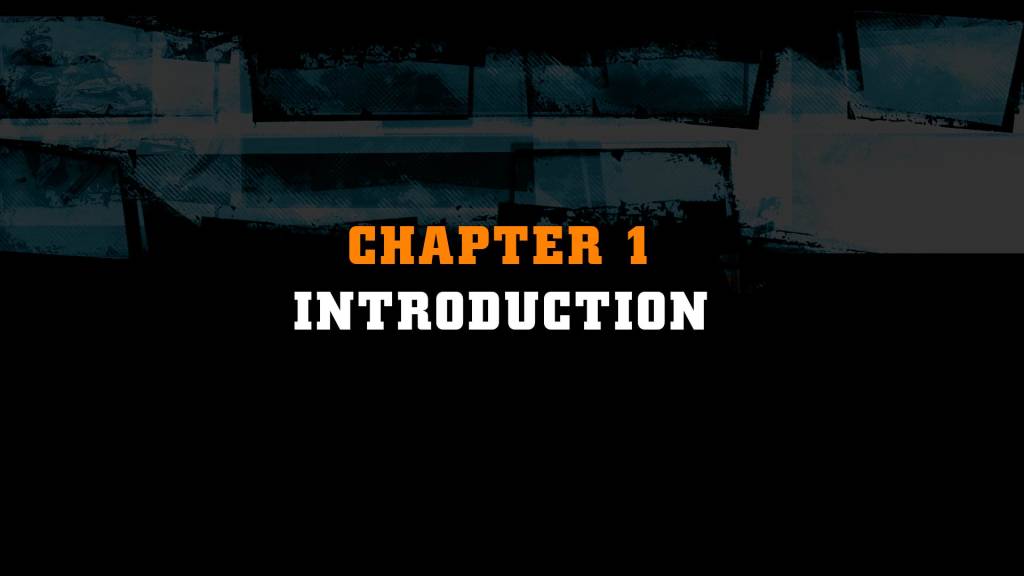
-

Trail Grubbing Definition:
Clearing debris and vegetation
from the trail providing a safe
experience for the user
-

Preparing the Trail:
Remove Bumps, Holes & Debris PRIOR to Snowfall: trail prep prior to freeze-up & snowfall can be the single most important item to help provide a smooth stable winter trail
-

Managing Partnership
The Snowmobile North Dakota Trail Program
is a non-profit organization that oversees
the recreation of snowmobiling across the state
We’re contracted by the North Dakota Parks and
Recreation Department to manage the state
snowmobile trail system
We exist to advance the recreation of
snowmobiling
through a variety of activities which includes trail
maintenance
-

Managing Partnership
Trail maintenance includes a variety of activities
including but not limited too:
› Removing Debris
› Mowing
› Limbing/cutting trees
› Installing signs
› Grooming
› Removing Signs
It’s important to RECOGNIZE the hazards
before the snow flies
-

What to do if you find a hazard
If possible remove it from the trail system
Sign appropriately providing a safe corridor for the trail
The #1 most important task:
Inform the Association’s Trail Coordinator to avoid
equipment damage and injury to operators
(both groomer and snowmobile operators)
-

Managing Partnership
The First Benchmark payment covers the expenses
for trail grubbing such as:
› Reimbursement for volunteers preparing trail
› Materials for trail maintenance (sign posts, etc.)
› Fuel expenses for equipment used to maintain trails
› Mileage for signing or trail grubbing, picking up equipment
› The SND Trail Program recommends reimbursing these
expenses
at the end of the season, when the association will have an
accurate figure for the seasons grooming expenses
Equipment Repairs: the association is responsible
for any damages done to the state equipment while
conducting trail maintenance
-
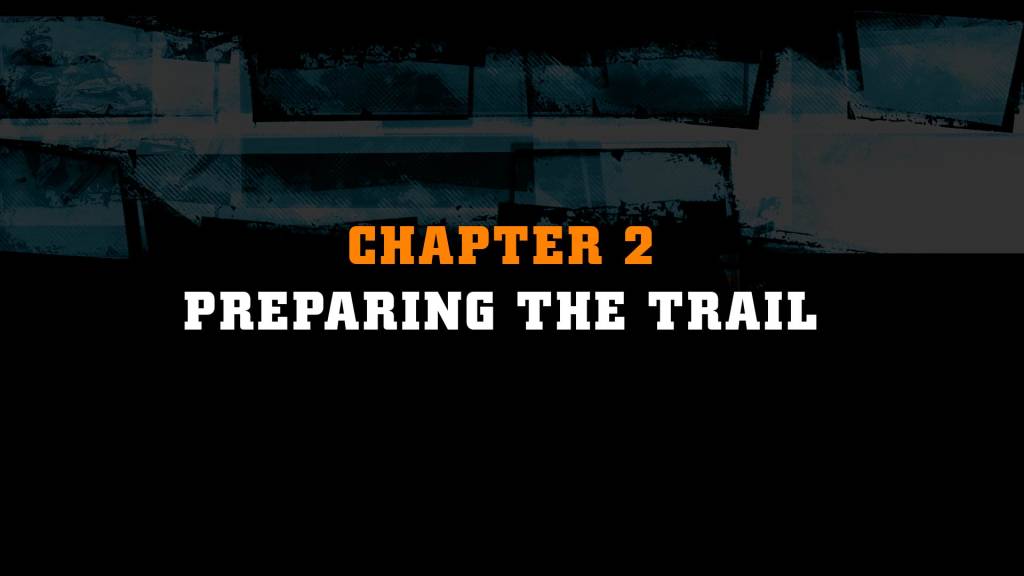
-

Preparing the Trail
Trail maintenance prior to snowfall can help make trails smoother in the winter. It is a good investment of time & money.
-

Preparing the Trail
Bumps & holes in the ground will also produce bumps in
the trail after snowfall – they can reappear as moguls on
heavily traveled trails almost immediately after grooming.
-

Preparing the Trail
Brush, stumps & debris should be removed from trail where they could be a hazard or block visibility. Keep debris off trail to help prevent premature thaws
-

Preparing the Trail
It’s healthier for
the tree and safer
for the rider
Limb trees to improve trail visibility & safety, protect equipment from damage, and to open up the canopy so snow can reach the trail’s surface
-
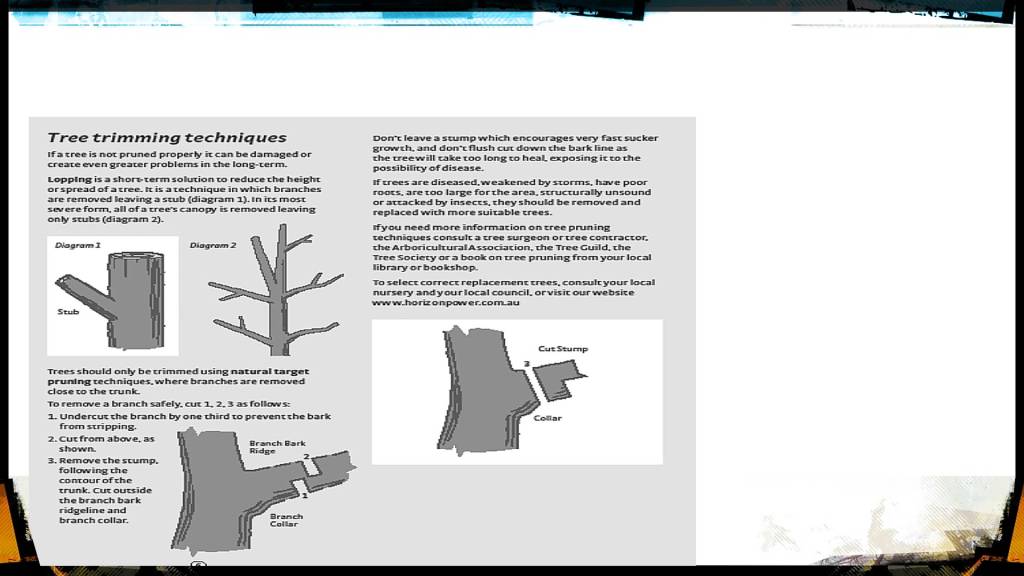
Tree Trimming Procedures
Groomers should be used to help determine how much brush must be removed!
-

Early Season Trail Preparation
First Snowfalls processed on the trail often create the base for remainder of the winter = an early solid, smooth base will help keep trail smoother throughout season
Early snowfalls often contain more free water & can compact well = vigorous smoothing & heavy compacting important
-

Early Season Trail Preparation
Newly Fallen Snow Layers should ideally be cut to 6 inches (15 cm) or less before compacting to ensure full compaction throughout the layer
Thick layers of newly fallen snow typically do not compact well = results in a less dense base layer more prone to mogul formation
-

Early Season Trail Preparation
Areas Prone to Wetness (like low or swampy crossings) – advantageous to keep snow thickness to a minimum in early part of season = allows underlying soil to freeze & become stable; frozen layer of earth
will also help keep trail solid later into spring
Since snow is excellent insulator, keep thin but covered so ground remains frozen
-

Early Season Trail Preparation
Cattail Removal - Groomers can be used to remove/knock down cattails per the following requirements:
› All expenses are to be paid from the First Benchmark
› Idler wheels cannot be submerged in water
› Keep the air filter clean!!!!!
-

Early Season Trail Preparation
Some wet areas (like springs, seeps) never freeze to any degree = should be a concern throughout season – particularly if they produce ice flows. Sometimes these areas can be covered with materials like wood chips to minimize carryover of mud & dirt onto adjacent trail surface
If possible, avoid such areas with trail.
Ice depths must be at least 12 inches thick on all bodies of water!!!
-

Everyone’s goal is to provide a fun and safe trail generating an awesome riding experience for snowmobilers!!!
-
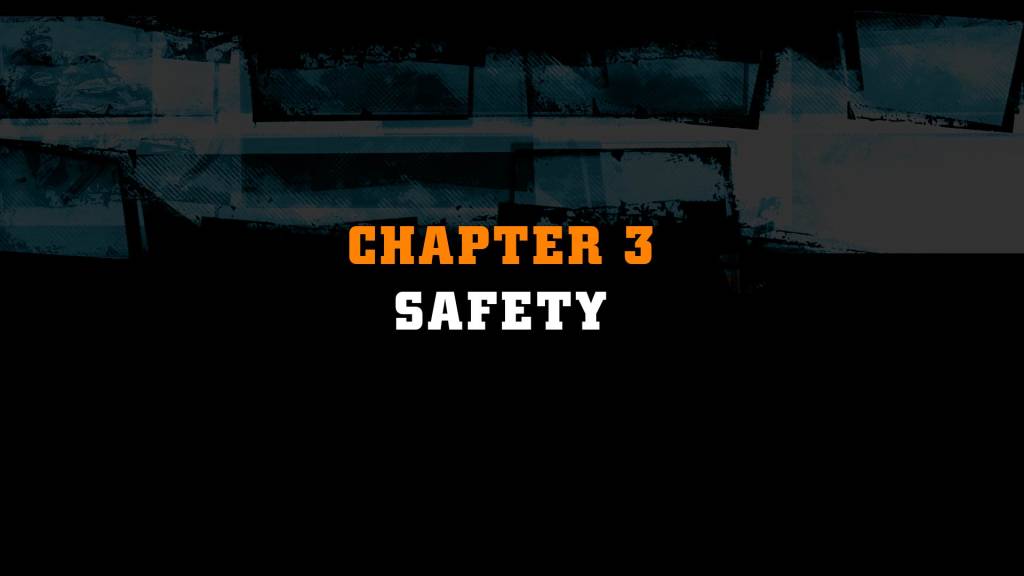
-

Early Season Trail Preparation
These safety requirements are the minimum requirements
only and should not be interpreted as a limitation:
› All accidents, injuries and near misses must immediately be reported to the SND office
› Notify the association’s Trail Coordinator if the proper safety equipment is not available, unusable or needs repair or replacement
› Refer to equipment manuals for in-depth operation/use procedures
› Equipment will be operated only under adherence to ND State Fleet Regulations
-

OHV / Mower Operating Recommended Procedures
Hearing protection
No passengers are allowed unless the machine
is equipped to handle passengers
Always shut the equipment off when maintaining or cleaning
Stay back 200 feet behind mowers
-

Power Tools / Shop Equipment Recommended Procedures
Hearing protection
Eye protection
Gloves, goggles, face shield
-

Trimmer Equipment Recommended Procedures
Hearing protection
Eye protection
Full-face protection
Gloves, leather boots
Chaps when operating metal cutting blades
-
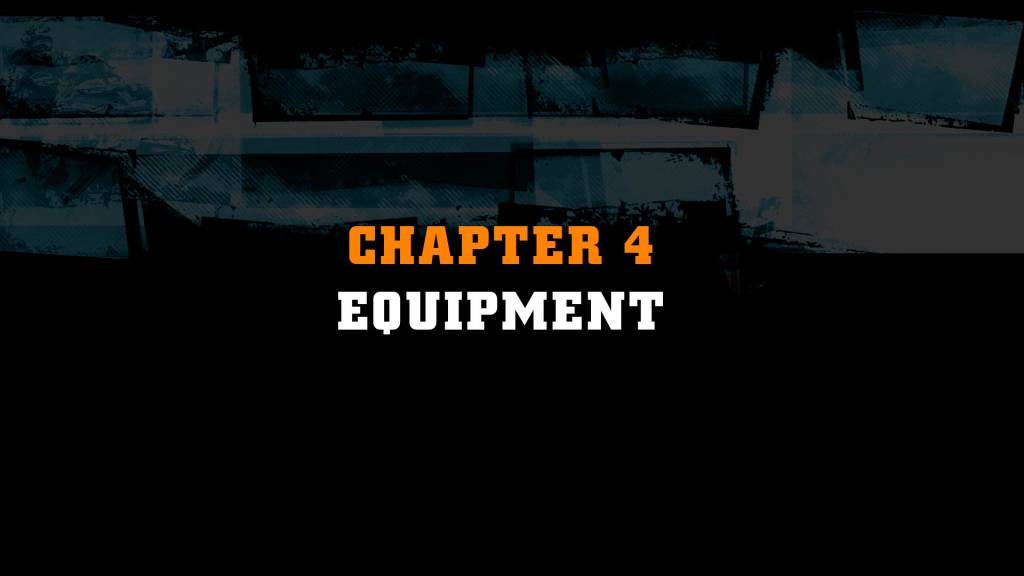
-

Trail Grubbing Equipment
Those who take the Trail Grubbing Class can operate the equipment Certification lasts 3 years
Certification lasts 3 years
Reservations: can be made by contacting the SND
office or State Park
There is not a fee associated with reserving the
equipment, this is a free service provided to the
volunteers making it easier to prepare the trail
-

Reservation Length
Equipment can be reserved for a period of 2 weeks
Extensions can be provided by contacting the SND office or State Park
Based on the reservation schedule, extensions will be approved
-

Back-to-Back Reservations
Clubs can work together to reserve equipment
back to back to save transportation costs and mileage
› The office scheduling the initial reservation must approve
› The equipment does not need to be checked in with the reserving office
› The club transferring the equipment to another club must complete the Trail Grubbing Equipment Check List form and provide it to the reserving office
-

Equipment Available
Ft. Ransom State Park: 2009 Polaris Ranger,
2007 Kunz Mower, 2007 Beartrack Utility Trailer
Contact: John 701-973-4331
Headquarters in Bismarck: 2007 Polaris
700 ATV, 2007 Beartrack Utility Trailer
Contact: SND Office 701-328-5377
ND Forest Service/ND Parks & Rec. Dept.
(Walhalla): 2001 Polaris Ranger, 2011 Kunz Mower, 2011 Triton Utility Trailer, 2007 Beartrack utility trailer Contact: Mike 701-549-2444
-
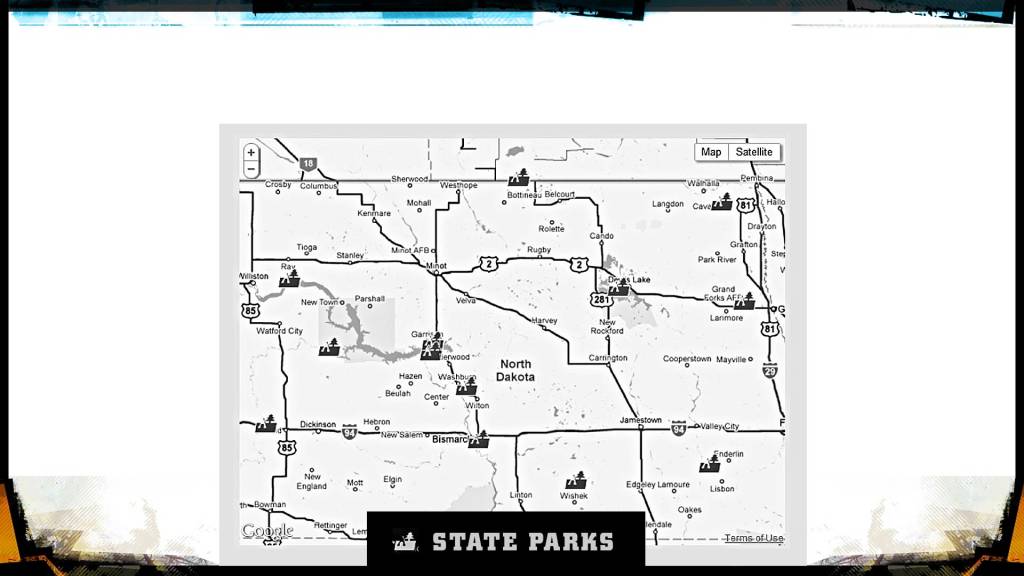
Park Locations
-
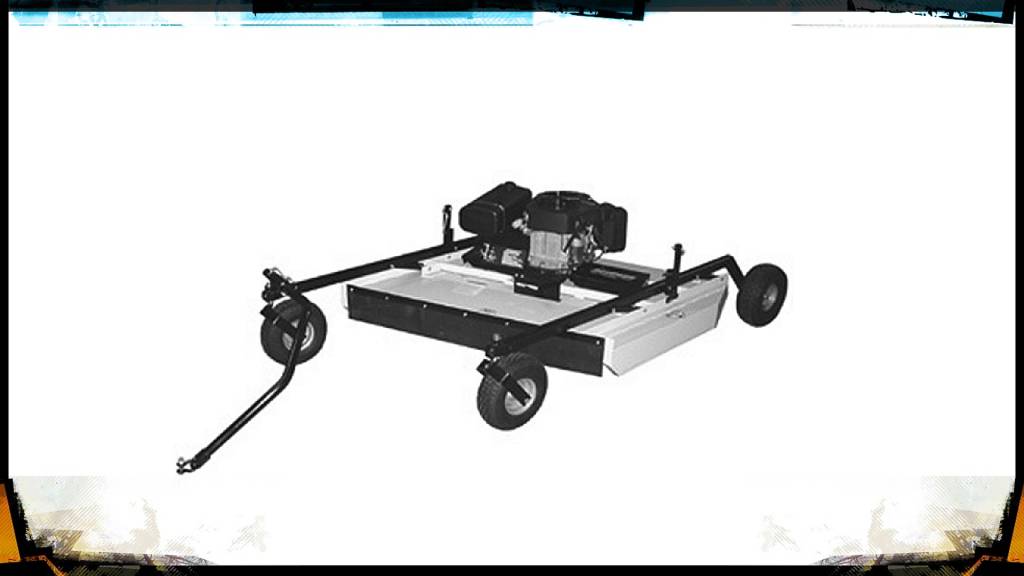
Kunz Mower Operation
-
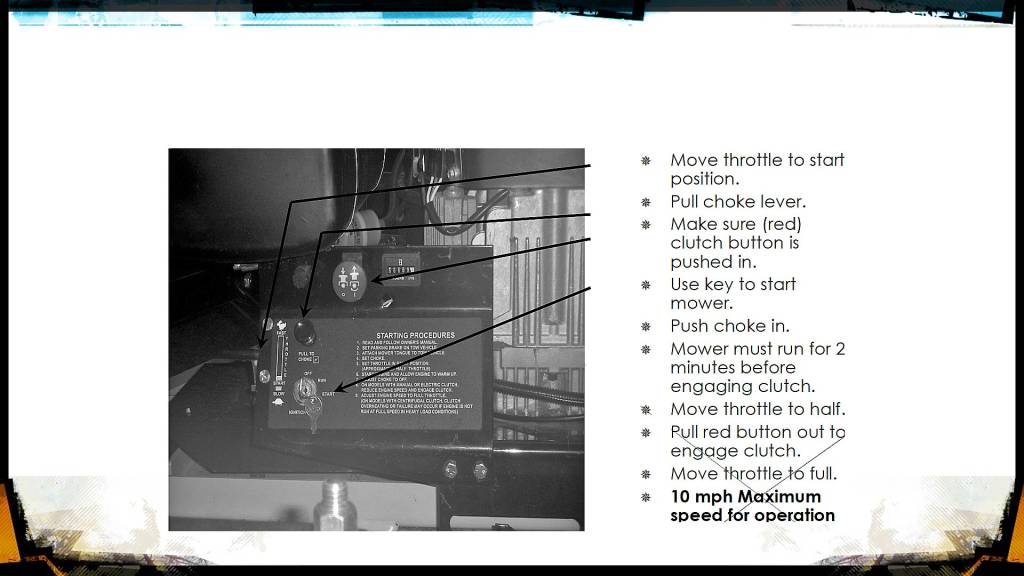
Kunz Mower Instructions
-

Kunz Mower Check List:
Check oil before each use and add if necessary.
If you need to add oil, use 10w – 30.
Clean air cleaner pre-filter daily
(wash and pre-oil the filter)
-

Mower return checklist:
Everything from mower checklist (previous slide)
must be done before return.
Clean all debris from mower deck and belt area.
Fill fuel and report any damages.
-

Troubleshooting
Mower dies when engaging clutch.
» Warm up engine longer.
Mower dies while mowing heavy grass
» Raise mower. Even 1” will make a difference.
Blades are coming loose.
» Torque blades to 300 foot pounds.
Belt is slipping.
» Belt tension spring should be 1-1/8” long.
-
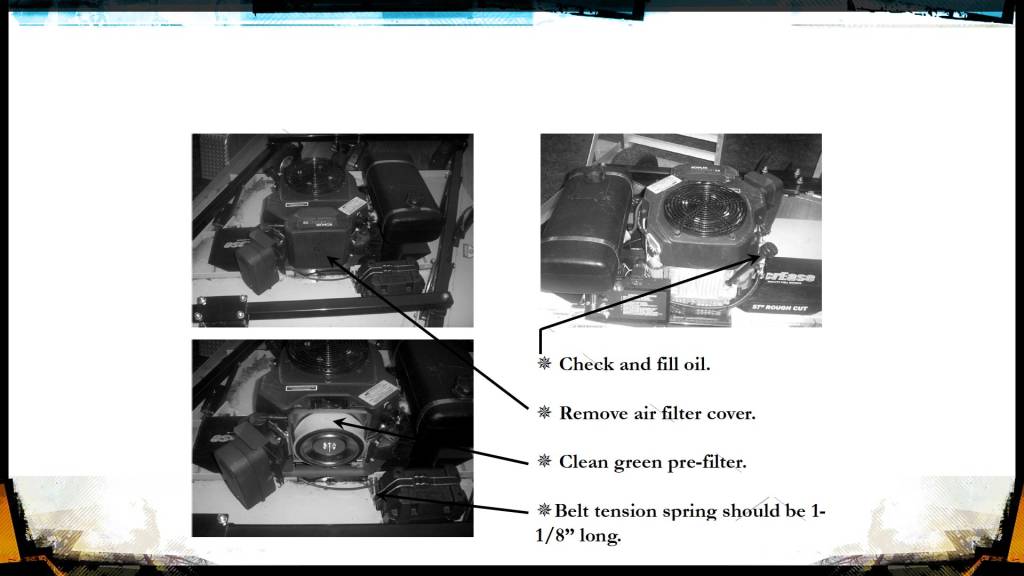
Daily Maintenance!
-

Polaris 700 Sportsman Operation
-
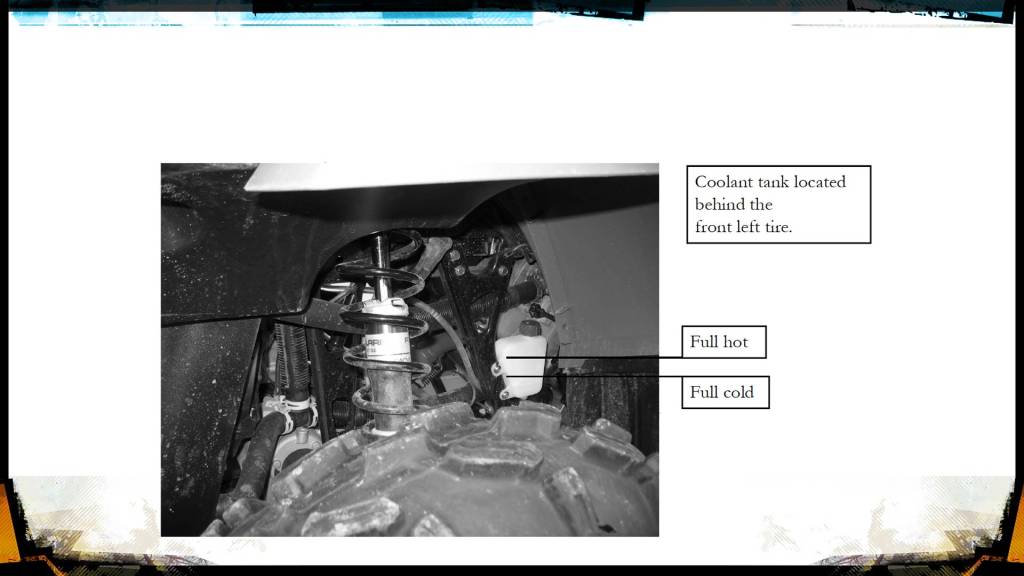
Check coolant level before each use.
-
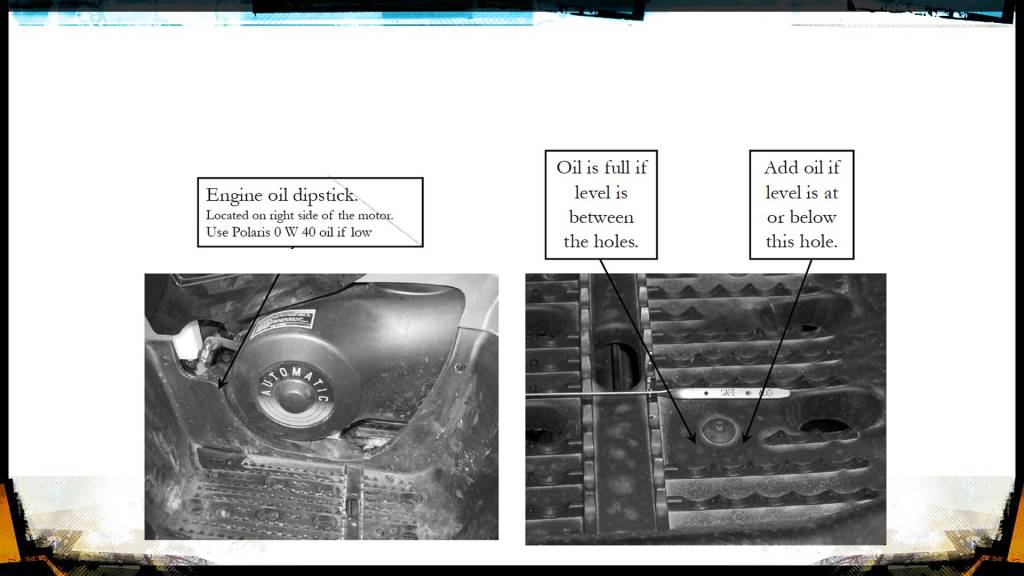
Check oil before each use.
-
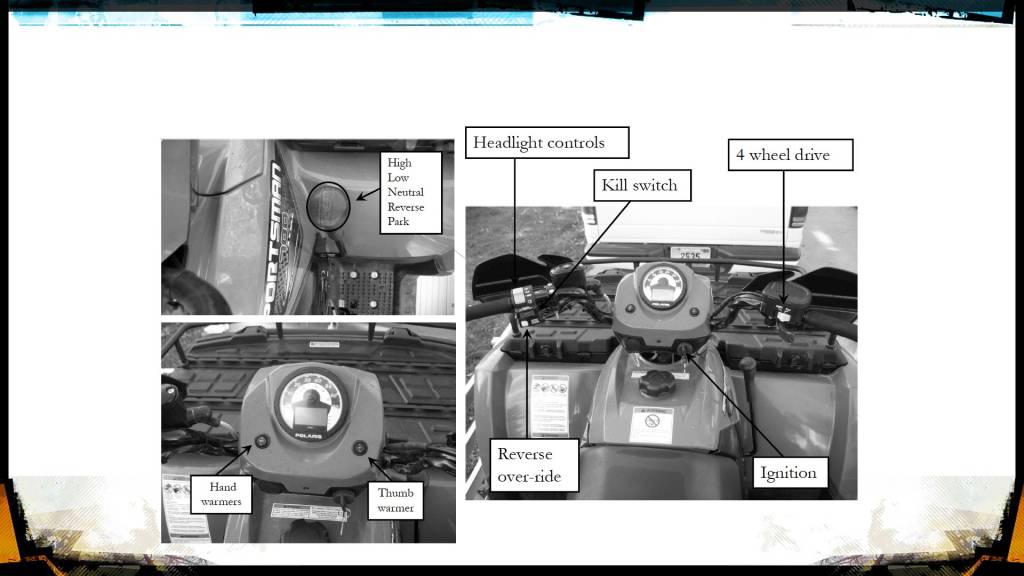
Operating Controls
-

Operating Instructions
Use the key located below the speedometer to start the engine.
» This ATV is fuel injected and is not equipped with a choke.
Allow the motor to warm up before shifting into gear.
Apply the brake and use shifter located by your right knee
to select desired gear.
Use low range when pulling a load or in heavy mud.
» Not doing so will cause excessive wear on the belt.
-

Operating Instructions
Reverse has a rev limiter and will only go backwards at
a slow speed. » If a higher speed is NEEDED, the reverse
over-ride button on the left handle bar can be
pressed.
When getting off machine, ALWAYS put shifter in the
PARK position.
Make sure all fluids (including fuel) are full and the machine
is clean before returning to SND.
Report any damage or needed repairs to SND immediately.
-

Polaris Ranger Operation
-
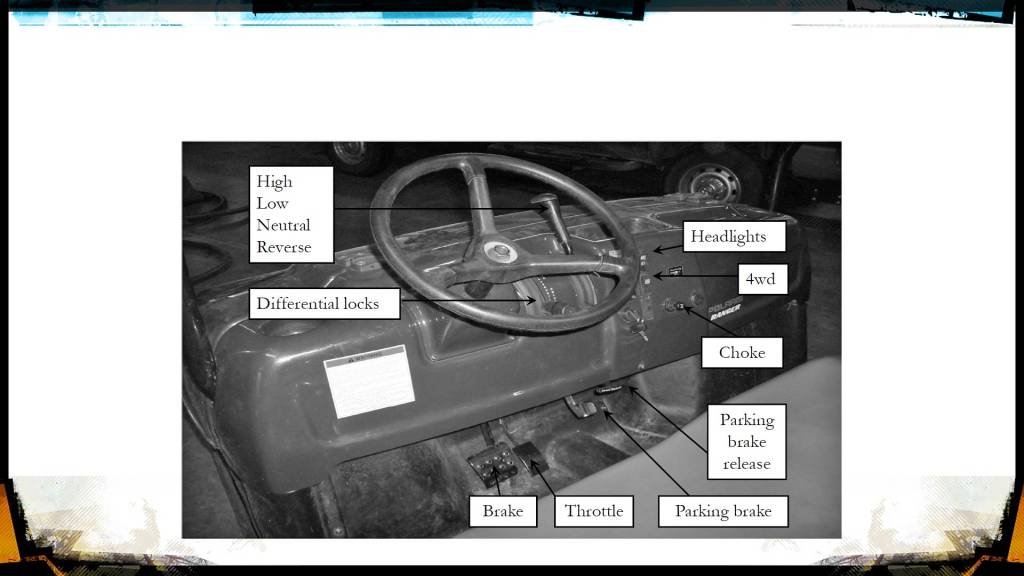
Ranger Operation
-
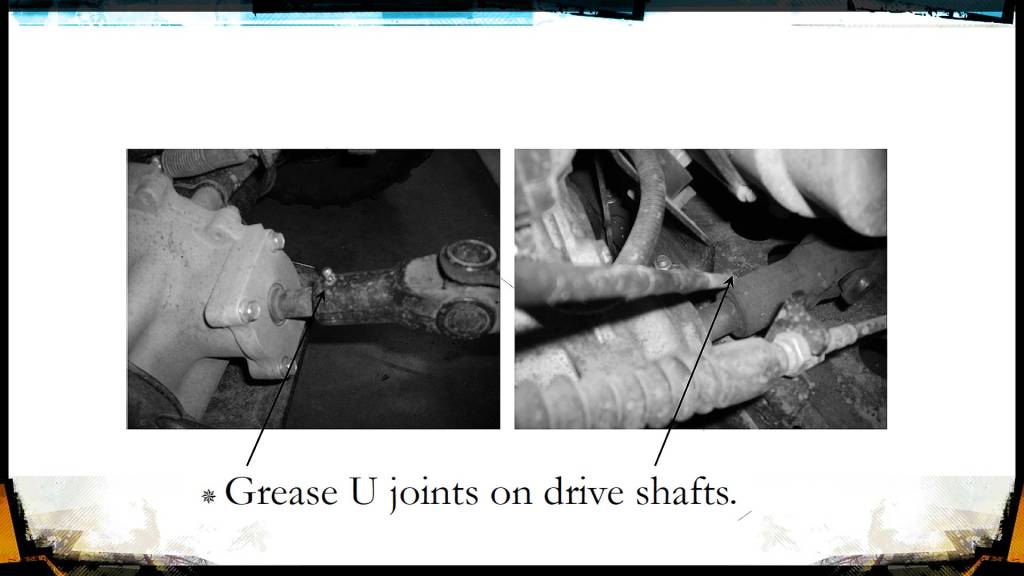
Daily Maintenance
-
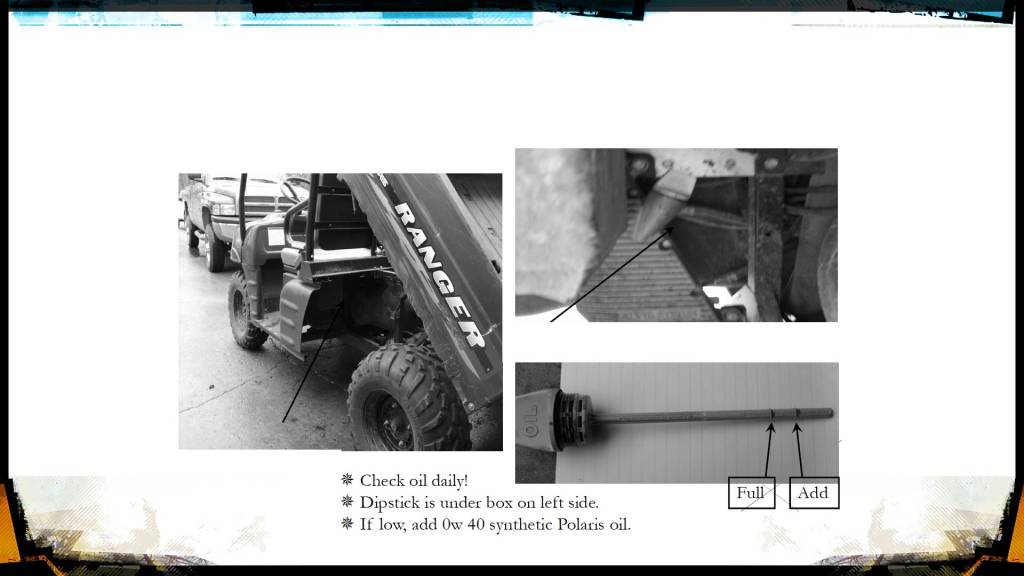
Daily Maintenance
-

Operating Instructions
Use low gear if pulling the mower or on loose ground.
Put in 4 wheel drive before getting into mud.
» Ranger will not turn as well while in 4wd.
Use differential locks if mud gets deep.
» Steering will be poor while the diffs are locked.
» Don’t use diff locks on dry or hard ground.
Make sure parking brake is released while driving.
-

Operating Instructions
Make sure radiator is clear of debris.
Report and damage or needed repair to SND ASAP.
Equipment must be clean and fuel filled when returning.
-
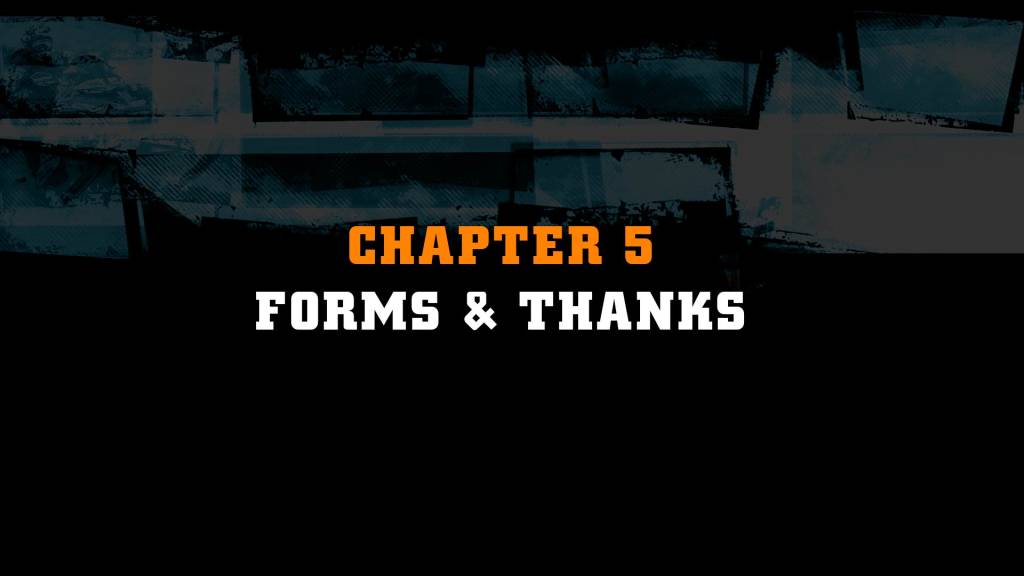
-
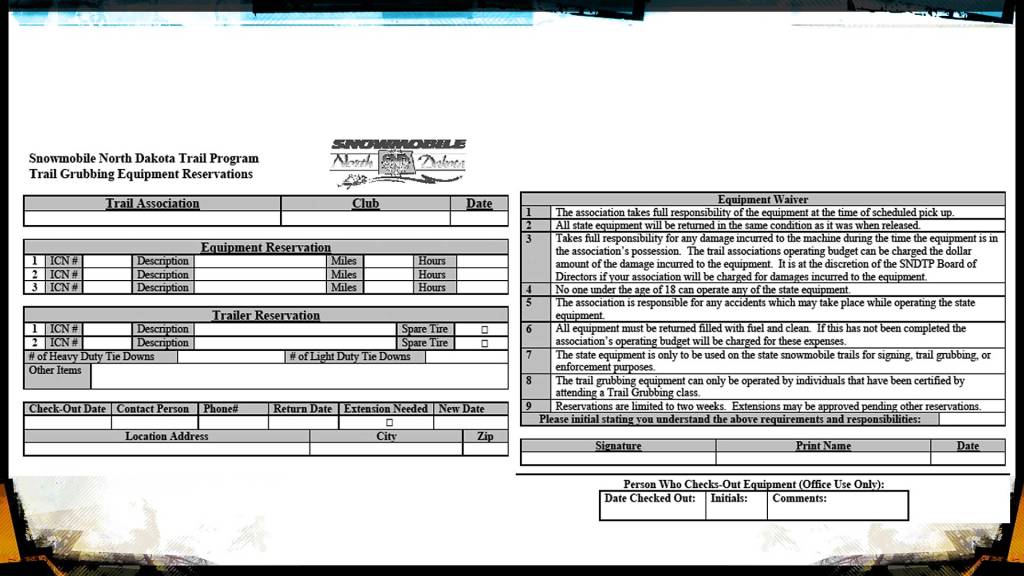
Equipment Release Form
-
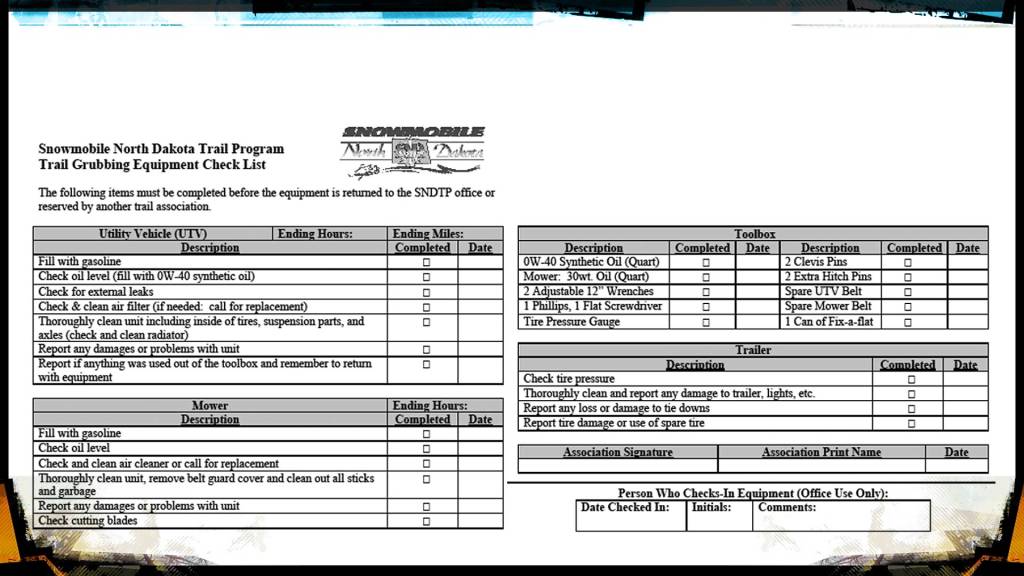
Equipment Check-in Forms
-

Thanks
We would like to thank you for participating
in our trail grubbing class today.
Remember Safety First!!!

 Trail Grubbing Definition:Clearing debris and vegetation
Trail Grubbing Definition:Clearing debris and vegetation Preparing the Trail:Remove Bumps, Holes & Debris PRIOR to Snowfall: trail prep prior to freeze-up & snowfall can be the single most important item to help provide a smooth stable winter trail
Preparing the Trail:Remove Bumps, Holes & Debris PRIOR to Snowfall: trail prep prior to freeze-up & snowfall can be the single most important item to help provide a smooth stable winter trail Managing PartnershipThe Snowmobile North Dakota Trail Program
Managing PartnershipThe Snowmobile North Dakota Trail Program


 Managing PartnershipTrail maintenance includes a variety of activities
Managing PartnershipTrail maintenance includes a variety of activities
 It’s important to RECOGNIZE the hazards
It’s important to RECOGNIZE the hazards What to do if you find a hazardIf possible remove it from the trail system
What to do if you find a hazardIf possible remove it from the trail system

 Inform the Association’s Trail Coordinator to avoid
Inform the Association’s Trail Coordinator to avoid Managing PartnershipThe First Benchmark payment covers the expenses
Managing PartnershipThe First Benchmark payment covers the expenses › Reimbursement for volunteers preparing trail
› Reimbursement for volunteers preparing trail

 Preparing the TrailTrail maintenance prior to snowfall can help make trails smoother in the winter. It is a good investment of time & money.
Preparing the TrailTrail maintenance prior to snowfall can help make trails smoother in the winter. It is a good investment of time & money.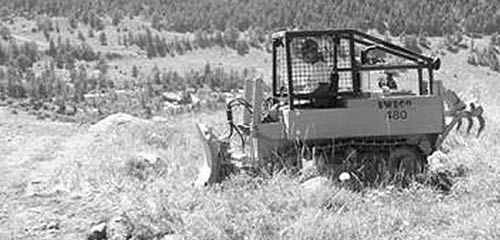
 Preparing the TrailBumps & holes in the ground will also produce bumps in
Preparing the TrailBumps & holes in the ground will also produce bumps in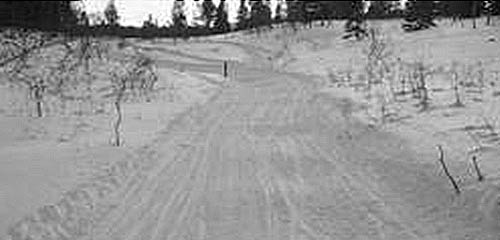
 Preparing the TrailBrush, stumps & debris should be removed from trail where they could be a hazard or block visibility. Keep debris off trail to help prevent premature thaws
Preparing the TrailBrush, stumps & debris should be removed from trail where they could be a hazard or block visibility. Keep debris off trail to help prevent premature thaws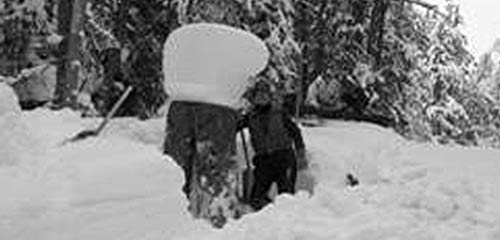
 Preparing the TrailIt’s healthier for
Preparing the TrailIt’s healthier for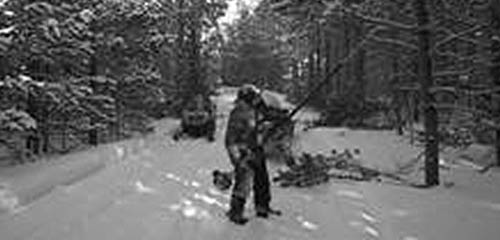
 Limb trees to improve trail visibility & safety, protect equipment from damage, and to open up the canopy so snow can reach the trail’s surface
Limb trees to improve trail visibility & safety, protect equipment from damage, and to open up the canopy so snow can reach the trail’s surface Tree Trimming ProceduresGroomers should be used to help determine how much brush must be removed!
Tree Trimming ProceduresGroomers should be used to help determine how much brush must be removed! Early Season Trail PreparationFirst Snowfalls processed on the trail often create the base for remainder of the winter = an early solid, smooth base will help keep trail smoother throughout season
Early Season Trail PreparationFirst Snowfalls processed on the trail often create the base for remainder of the winter = an early solid, smooth base will help keep trail smoother throughout season Early snowfalls often contain more free water & can compact well = vigorous smoothing & heavy compacting important
Early snowfalls often contain more free water & can compact well = vigorous smoothing & heavy compacting important
 Early Season Trail PreparationNewly Fallen Snow Layers should ideally be cut to 6 inches (15 cm) or less before compacting to ensure full compaction throughout the layer
Early Season Trail PreparationNewly Fallen Snow Layers should ideally be cut to 6 inches (15 cm) or less before compacting to ensure full compaction throughout the layer Thick layers of newly fallen snow typically do not compact well = results in a less dense base layer more prone to mogul formation
Thick layers of newly fallen snow typically do not compact well = results in a less dense base layer more prone to mogul formation
 Early Season Trail PreparationAreas Prone to Wetness (like low or swampy crossings) – advantageous to keep snow thickness to a minimum in early part of season = allows underlying soil to freeze & become stable; frozen layer of earth
Early Season Trail PreparationAreas Prone to Wetness (like low or swampy crossings) – advantageous to keep snow thickness to a minimum in early part of season = allows underlying soil to freeze & become stable; frozen layer of earth Since snow is excellent insulator, keep thin but covered so ground remains frozen
Since snow is excellent insulator, keep thin but covered so ground remains frozen
 Early Season Trail PreparationCattail Removal - Groomers can be used to remove/knock down cattails per the following requirements:
Early Season Trail PreparationCattail Removal - Groomers can be used to remove/knock down cattails per the following requirements: › All expenses are to be paid from the First Benchmark
› All expenses are to be paid from the First Benchmark Early Season Trail PreparationSome wet areas (like springs, seeps) never freeze to any degree = should be a concern throughout season – particularly if they produce ice flows. Sometimes these areas can be covered with materials like wood chips to minimize carryover of mud & dirt onto adjacent trail surface
Early Season Trail PreparationSome wet areas (like springs, seeps) never freeze to any degree = should be a concern throughout season – particularly if they produce ice flows. Sometimes these areas can be covered with materials like wood chips to minimize carryover of mud & dirt onto adjacent trail surface If possible, avoid such areas with trail.
If possible, avoid such areas with trail.

 Everyone’s goal is to provide a fun and safe trail generating an awesome riding experience for snowmobilers!!!
Everyone’s goal is to provide a fun and safe trail generating an awesome riding experience for snowmobilers!!!
 Early Season Trail PreparationThese safety requirements are the minimum requirements only and should not be interpreted as a limitation:
Early Season Trail PreparationThese safety requirements are the minimum requirements only and should not be interpreted as a limitation: › All accidents, injuries and near misses must immediately be reported to the SND office› Notify the association’s Trail Coordinator if the proper safety equipment is not available, unusable or needs repair or replacement› Refer to equipment manuals for in-depth operation/use procedures› Equipment will be operated only under adherence to ND State Fleet Regulations
› All accidents, injuries and near misses must immediately be reported to the SND office› Notify the association’s Trail Coordinator if the proper safety equipment is not available, unusable or needs repair or replacement› Refer to equipment manuals for in-depth operation/use procedures› Equipment will be operated only under adherence to ND State Fleet Regulations OHV / Mower Operating Recommended ProceduresHearing protection
OHV / Mower Operating Recommended ProceduresHearing protection



 Power Tools / Shop Equipment Recommended ProceduresHearing protection
Power Tools / Shop Equipment Recommended ProceduresHearing protection


 Trimmer Equipment Recommended ProceduresHearing protection
Trimmer Equipment Recommended ProceduresHearing protection





 Trail Grubbing EquipmentThose who take the Trail Grubbing Class can operate the equipment Certification lasts 3 years
Trail Grubbing EquipmentThose who take the Trail Grubbing Class can operate the equipment Certification lasts 3 years



 Reservation LengthEquipment can be reserved for a period of 2 weeks
Reservation LengthEquipment can be reserved for a period of 2 weeks


 Back-to-Back ReservationsClubs can work together to reserve equipment
Back-to-Back ReservationsClubs can work together to reserve equipment › The office scheduling the initial reservation must approve
› The office scheduling the initial reservation must approve Equipment AvailableFt. Ransom State Park: 2009 Polaris Ranger,
Equipment AvailableFt. Ransom State Park: 2009 Polaris Ranger,
 Headquarters in Bismarck: 2007 Polaris 700 ATV, 2007 Beartrack Utility Trailer
Headquarters in Bismarck: 2007 Polaris 700 ATV, 2007 Beartrack Utility Trailer
 Park Locations
Park Locations Kunz Mower Operation
Kunz Mower Operation Kunz Mower Instructions
Kunz Mower Instructions Kunz Mower Check List:Check oil before each use and add if necessary.
Kunz Mower Check List:Check oil before each use and add if necessary.
 If you need to add oil, use 10w – 30.Clean air cleaner pre-filter daily
If you need to add oil, use 10w – 30.Clean air cleaner pre-filter daily
 Mower return checklist:Everything from mower checklist (previous slide)
Mower return checklist:Everything from mower checklist (previous slide)
 Clean all debris from mower deck and belt area.Fill fuel and report any damages.
Clean all debris from mower deck and belt area.Fill fuel and report any damages.
 TroubleshootingMower dies when engaging clutch.
TroubleshootingMower dies when engaging clutch.
 Mower dies while mowing heavy grass
Mower dies while mowing heavy grass
 Belt is slipping.
Belt is slipping. Daily Maintenance!
Daily Maintenance! Polaris 700 Sportsman Operation
Polaris 700 Sportsman Operation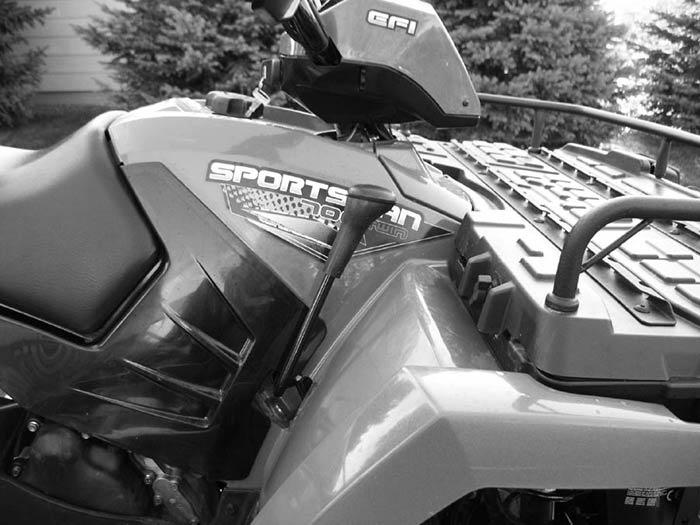
 Check coolant level before each use.
Check coolant level before each use. Check oil before each use.
Check oil before each use. Operating Controls
Operating Controls Operating InstructionsUse the key located below the speedometer to start the engine.
Operating InstructionsUse the key located below the speedometer to start the engine.
 Allow the motor to warm up before shifting into gear.Apply the brake and use shifter located by your right knee
Allow the motor to warm up before shifting into gear.Apply the brake and use shifter located by your right knee
 Use low range when pulling a load or in heavy mud.
Use low range when pulling a load or in heavy mud. Operating InstructionsReverse has a rev limiter and will only go backwards at
Operating InstructionsReverse has a rev limiter and will only go backwards at
 When getting off machine, ALWAYS put shifter in the
When getting off machine, ALWAYS put shifter in the
 Report any damage or needed repairs to SND immediately.
Report any damage or needed repairs to SND immediately. Polaris Ranger Operation
Polaris Ranger Operation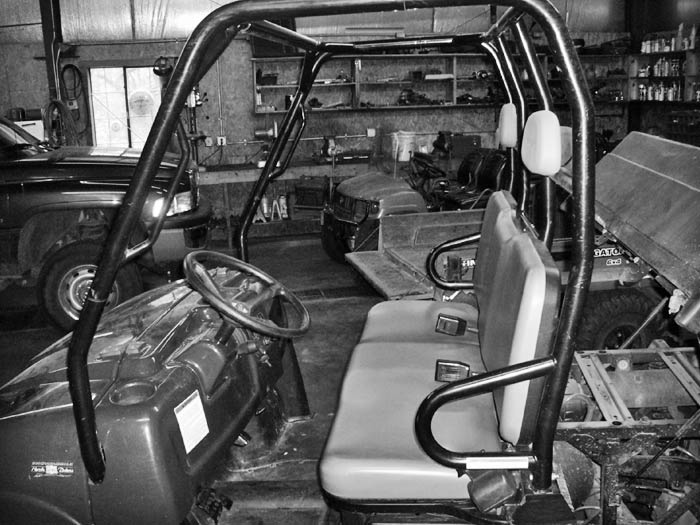
 Ranger Operation
Ranger Operation Daily Maintenance
Daily Maintenance Daily Maintenance
Daily Maintenance Operating InstructionsUse low gear if pulling the mower or on loose ground.
Operating InstructionsUse low gear if pulling the mower or on loose ground.
 Put in 4 wheel drive before getting into mud.
Put in 4 wheel drive before getting into mud.
 Make sure parking brake is released while driving.
Make sure parking brake is released while driving. Operating InstructionsMake sure radiator is clear of debris.
Operating InstructionsMake sure radiator is clear of debris.
 Report and damage or needed repair to SND ASAP.Equipment must be clean and fuel filled when returning.
Report and damage or needed repair to SND ASAP.Equipment must be clean and fuel filled when returning.

 Equipment Release Form
Equipment Release Form Equipment Check-in Forms
Equipment Check-in Forms ThanksWe would like to thank you for participating
ThanksWe would like to thank you for participating
